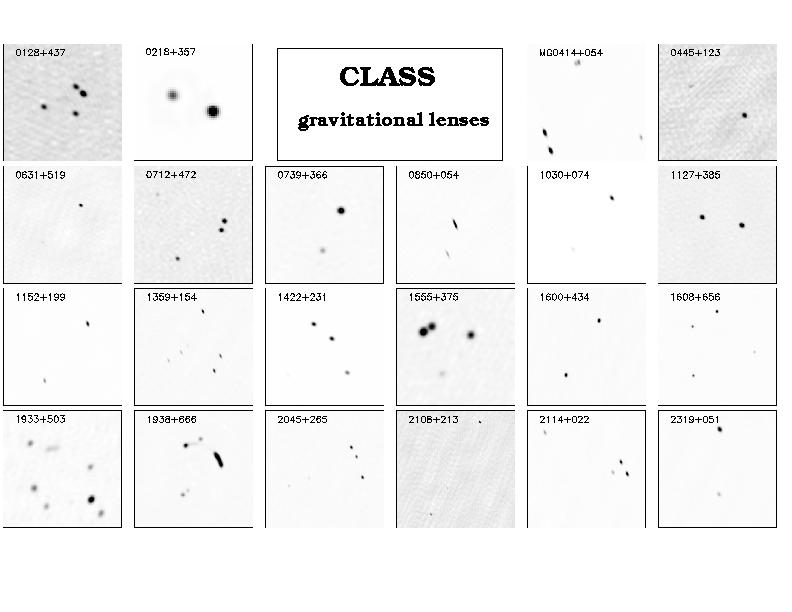The Cosmic Lens All-Sky Survey (CLASS)
The Cosmic Lens All-Sky Survey
|
The Cosmic Lens All-Sky Survey (CLASS) is a search for gravitationally lensed compact radio sources. CLASS was designed to be a survey with well-defined statistical properties, to ease the extraction of cosmological parameter estimates (see this page for more information on estimating cosmological parameters from gravitational lensing surveys). Over 11,000 radio sources were selected for snapshot observation with the VLA. These sources were chosen on the basis of their flat radio spectra (spectral index of >-0.5 between 1.4 and 5GHz) and flux density (>30mJy at 5GHz). Flat-spectrum radio sources appear compact (point-like) to lower-resolution instruments such as the VLA. Lensing of compact sources is easier to recognise than lensing of extended sources. The snapshot observations of the candidates are checked for evidence of gravitational lensing, i.e. multiple compact components appearing near to each other (within 6 arc-seconds). Most candidates are shown by the snapshots to be single compact components, or core-jet sources (a very common type of radio source). The surviving gravitational lens candidates are then re-observed at higher resolution with MERLIN. Most of the surviving candidates from the "VLA stage" of the process are rejected at this point, since the higher resolution of MERLIN resolves most extended emission. Since the multiple images formed by gravitational lensing are images of the same (very small) object, they should all be of a similar size. Commonly, MERLIN images of the candidates show one or several components to be extended, or even resolve the more extended components out altogether. The remaining few candidates are again re-observed, this time with the VLBA. This instrument enables us to turn up the resolution again, resolving any slightly extended components in the candidates surviving from the "MERLIN stage". At this point, observations often detect sub-structure in the components, and it is a strong test of the gravitational lensing hypothesis to check if the sub-structure has similar morphology in all of the components. Using these methods, CLASS has identified 22 gravitational lens systems. Some of the lens systems discovered have been monitored to determine the time-delay between the images, allowing a measurement of Hubble's constant to be made. The individual lens systems allow examination of the total (dark + light) mass profile of individual lensing galaxies to be made even at high redshifts. The statistical properties of CLASS also make it useful for cosmological parameter estimation, as mentioned previously. Current work is focussed on the modelling the mass profiles of individual lens systems and looking for evidence of sub-structure in the dark matter haloes of the lens galaxy. |

